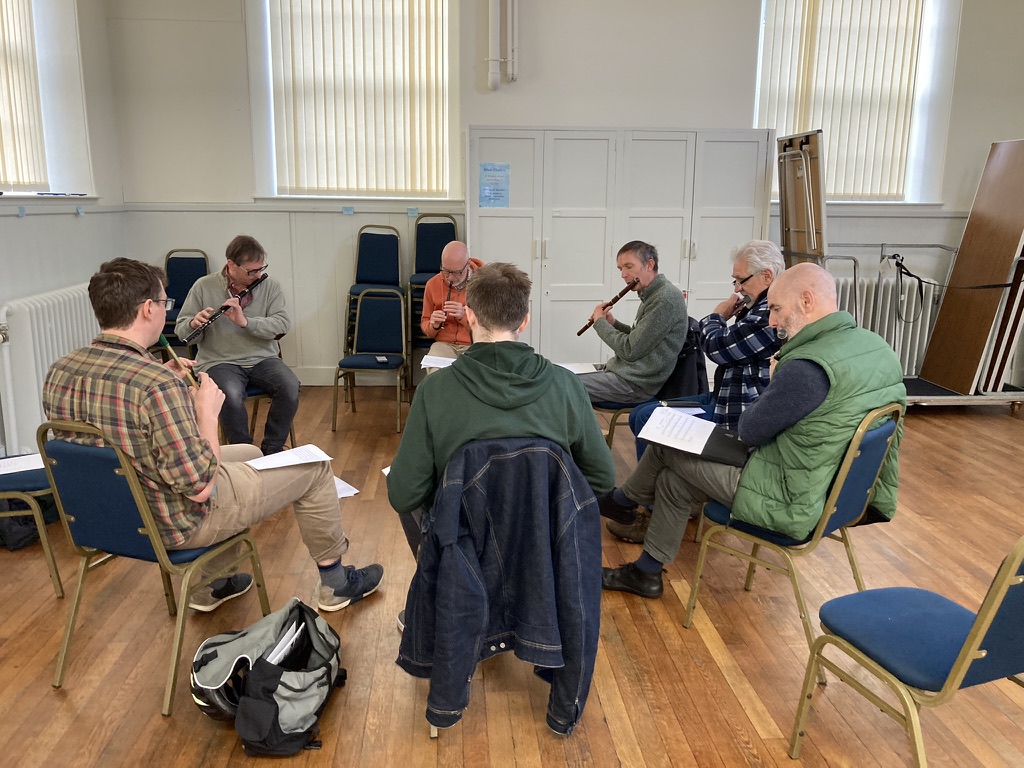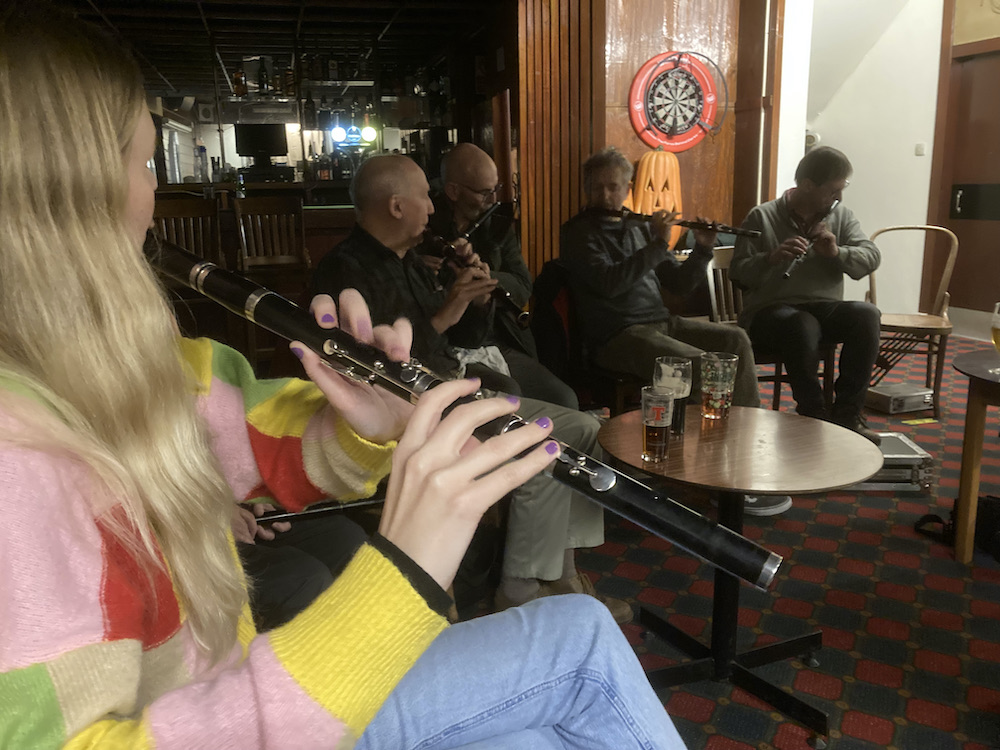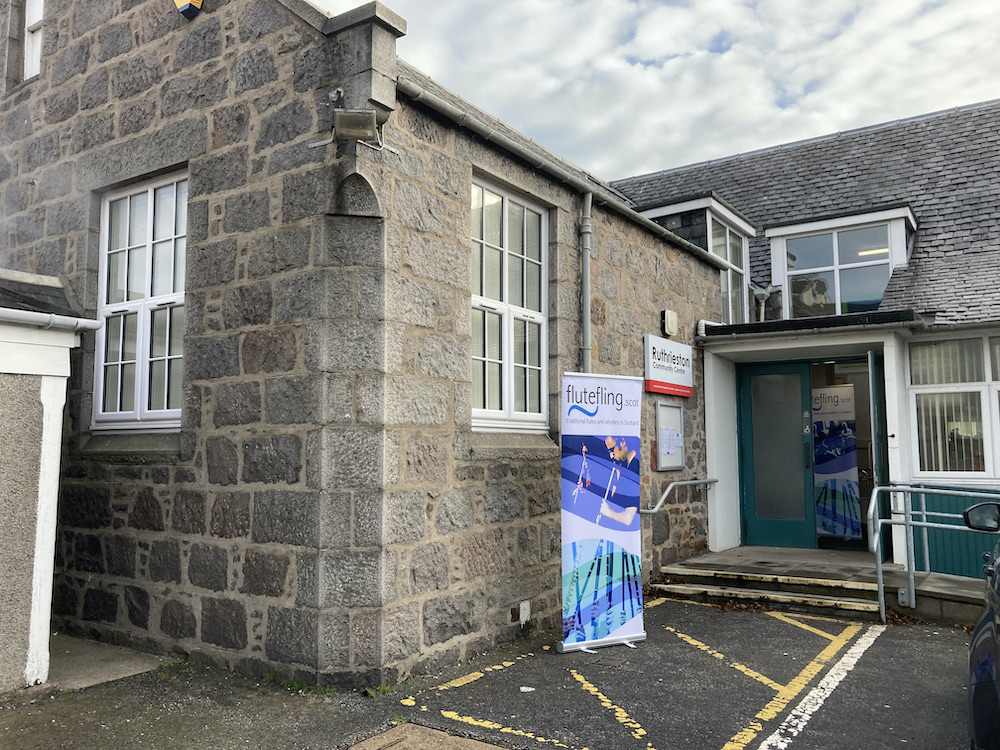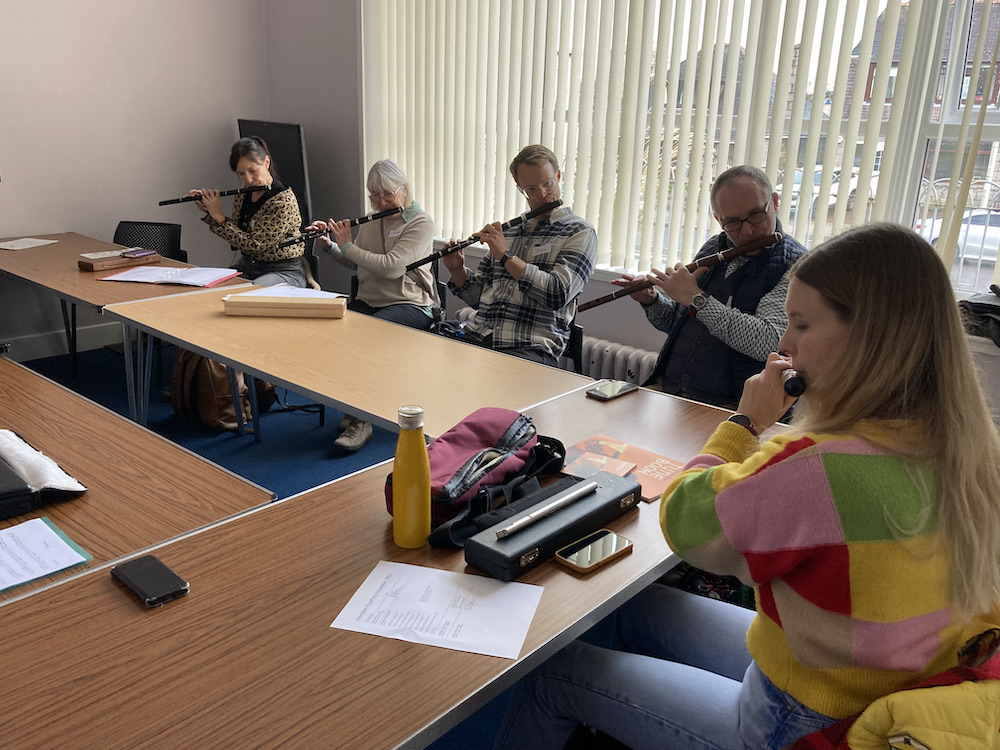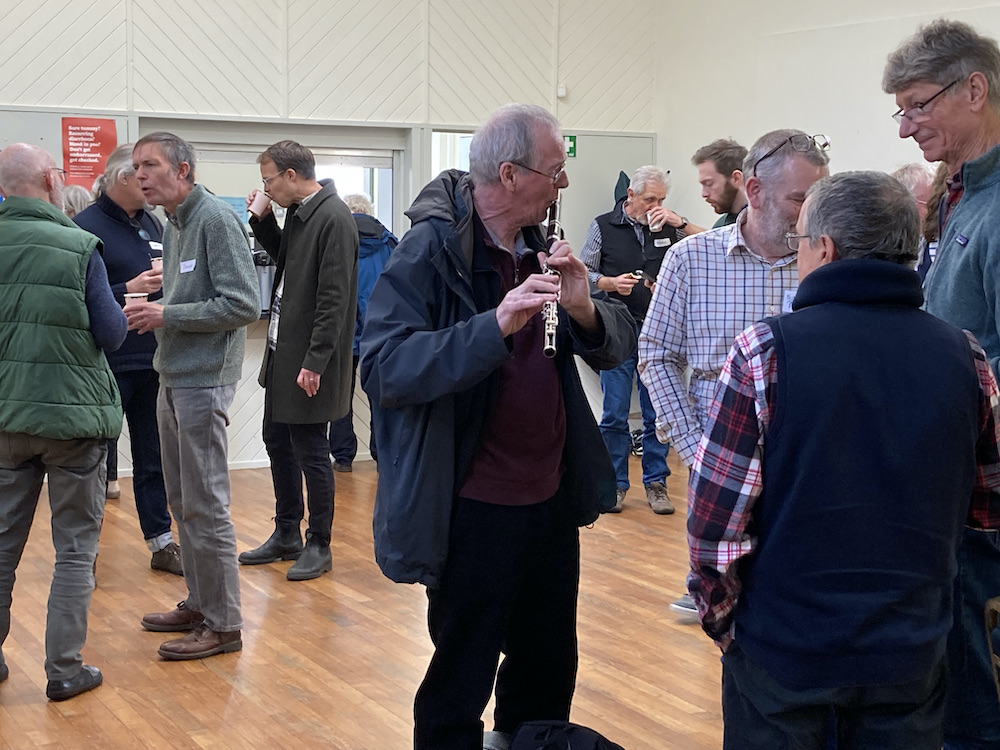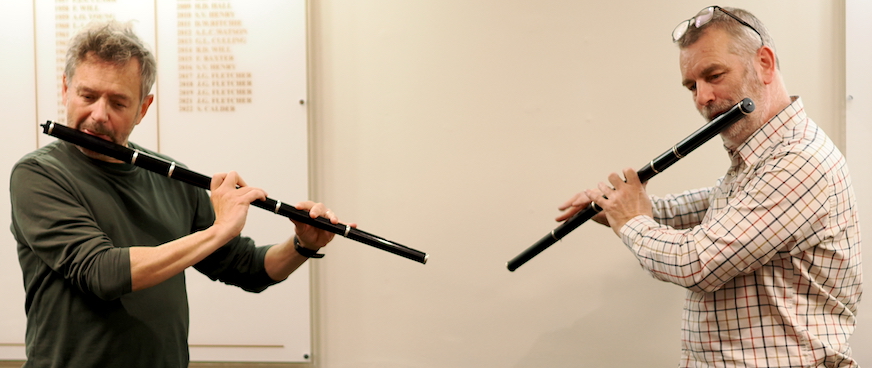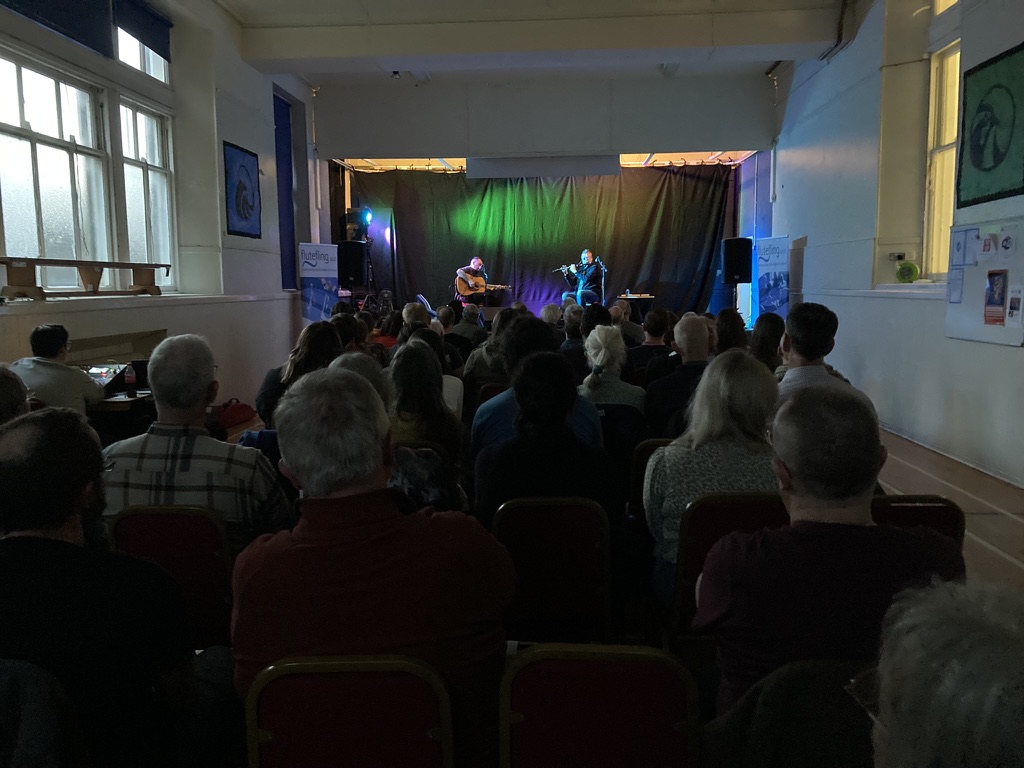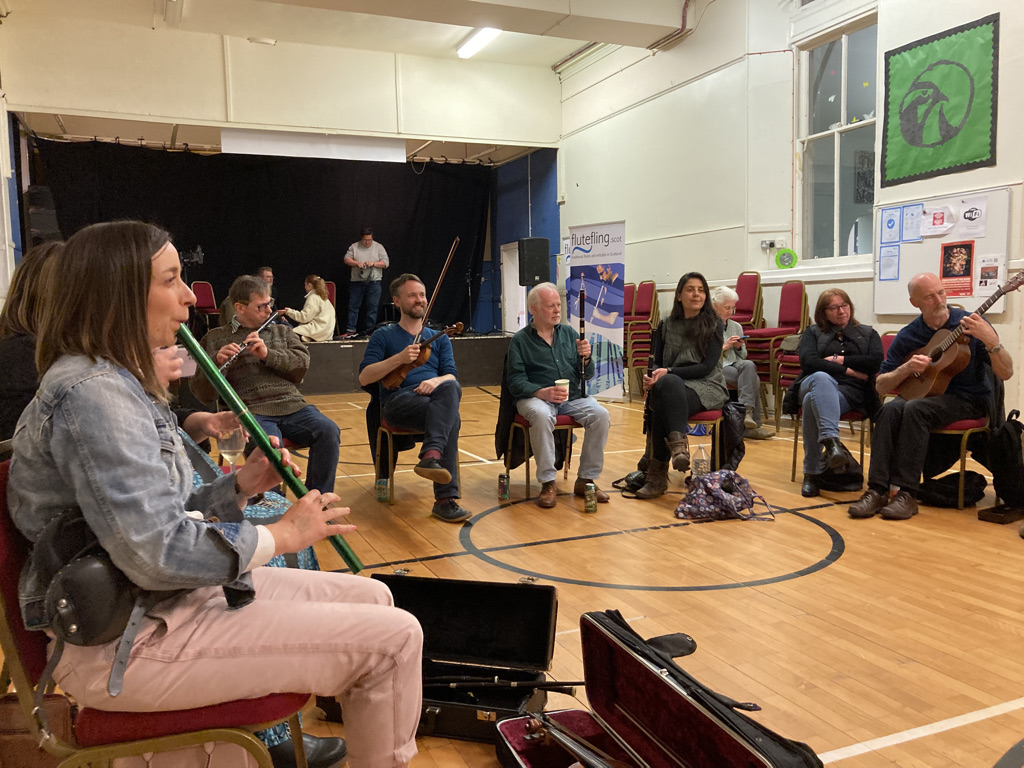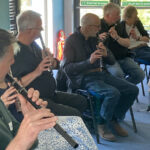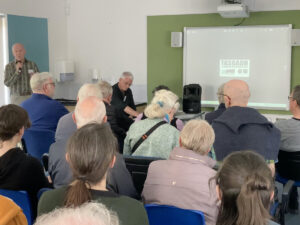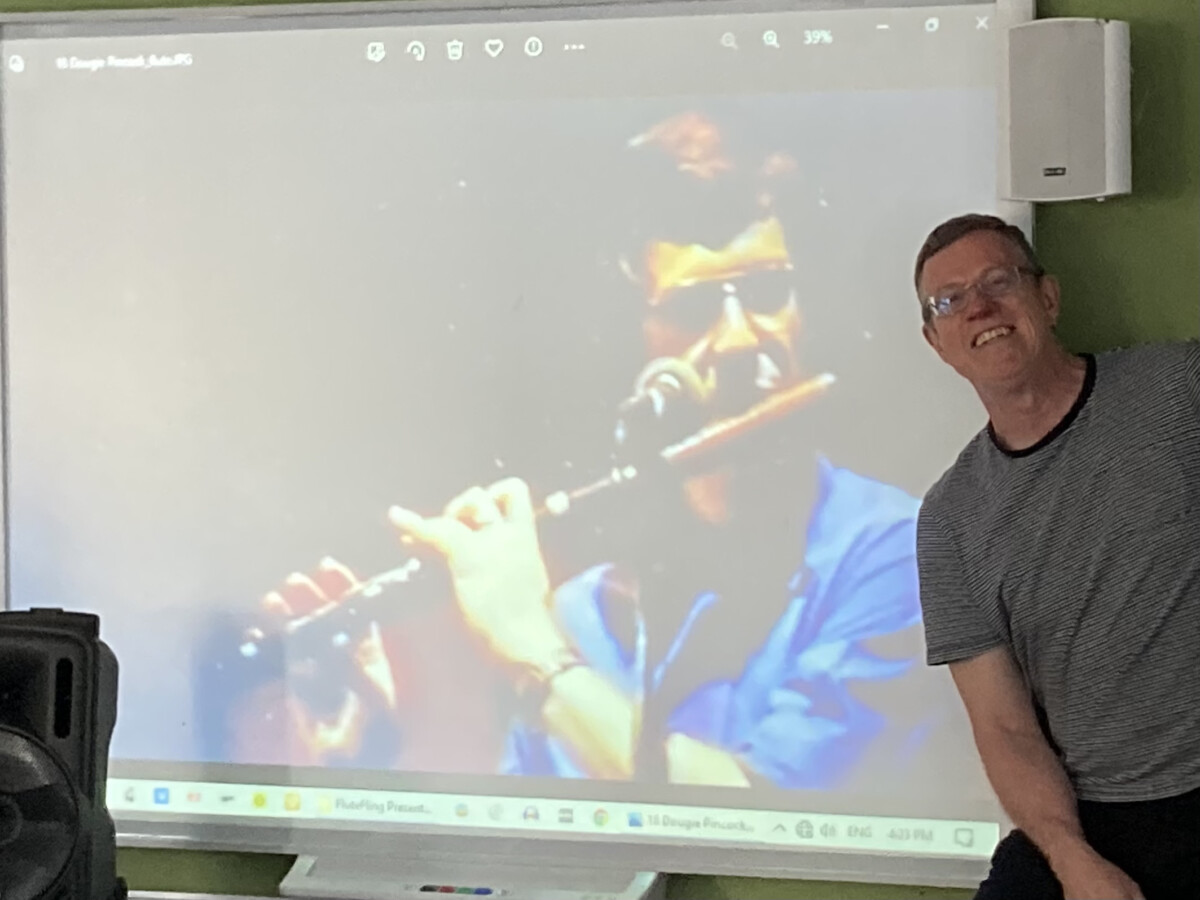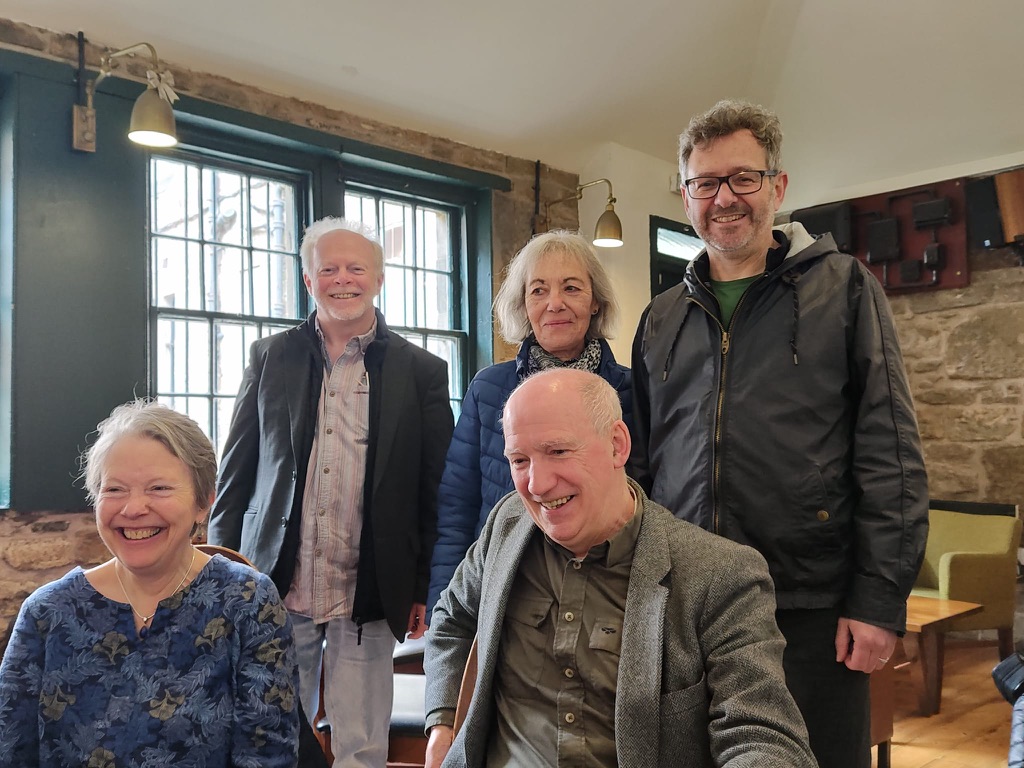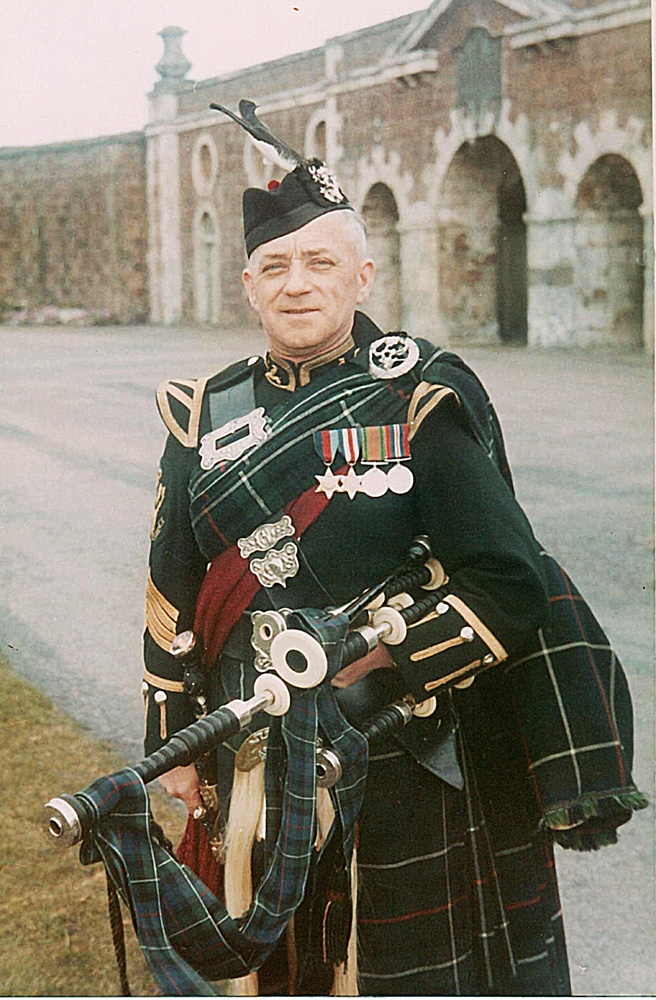Aberdeen FluteFling 3-5 November 2023
In Scotland when the clocks are turned back in October, you know you’re getting deep into Autumn, with darker days and longer nights. Which makes the thought of being indoors with others to play music so much more inviting, as it was for the first FluteFling outing to the Granite City since 2019.
Niall Kenny and Munro Gauld had previously taught at FluteFling in Edinburgh but this was the first time Tina Jordan Rees had taught with us, so it was a departure from our previous outings. Indeed, this was the first time that none of the core tutors were teaching.
This year we were based at Ruthrieston Community Centre, with sessions at The Blue Lamp (Friday and Sunday) and at Cults Bowling Club (Saturday). The latter was unusual for us and made necessary by the lack of available venues in the city, a problem we found when organising the Edinburgh weekend in May and part of a wider problem across the country. However, we were made very welcome and had the space to ourselves.
Storms Babet and Ciarán had battered the NE of Scotland and made travel plans for many a bit tricky but we were all there to enjoy a well-attended event — the highest numbers we have had for the Aberdeen weekend.
With familiar faces gathering at the Friday night session, we eased ourselves into remembering what these gatherings are all about. Where else can you be in the company of such great flute players and fellow aficionados without apology? Digging out the musical gems from the back of the mind, sharing knowledge and news together. It was an informal way to warm ourselves up and reorient ourselves to the flute world.
Saturday
The Saturday venue at Ruthrieston was new to us and well-scouted by John Crawford, who once again had done a great job to ensure that a FluteFling weekend could go ahead. Sadly, John wasn’t able to attend in person until the final session, but we hope he is on the mend and in good fettle for the next outing. Kenny Hadden was of course on hand throughout the day and Coralie Mills returned to the front desk to ensure everything ran smoothly from registration to packing up and all things in between.
Once again, we rotated three groups around the three tutors so that everyone got a range of different perspectives and focus. The longer breaks were a great chance to catch up, try out flutes and clarify teaching points. We were joined just before lunch by flute maker George Ormiston, who was great company and had brought some of his flutes and a whistle for people to try.
We were struck by the fact that almost all of those attending the weekend were playing modern flutes and only a handful of older flutes were being played. It’s a sure sign of how flute making has come on in recent years that so many high quality instruments are now available to musicians. We didn’t do a survey, but as well as numerous Ormistons, there were examples by Aebi, Gabriel, Windward, Lehart, Thomson, Wilkes and certainly others. Maybe next time we should do a survey.
The talk at the end of the day was an interview with Munro Gauld led by Dougie Pincock. The focus was Munro’s work in exploring some of the vast archives of Scottish traditional music, in particular rediscovering the lost music of the Gàidhlig Highlands.
In particular, Munro stressed the importance of connecting the music to place, people and story. This roots the music in history and directly connects the present day musician and listener to people, events and emotions of the past, giving it an additional depth and heft that might otherwise be missing. Munro went on to describe how we can all do this for ourselves, digging where we stand. It is clear that there is much to be unearthed and brought to light, and that many were clearly inspired to do so.
Personally, I felt that there was possibly a natural synergy in rediscovering forgotten Scottish music on flutes, an instrument long forgotten in Scotland, now becoming remembered.
I have been aware of Munro’s work for a while and his talk was originally going to be at Edinburgh in 2020, which of course fell foul of Covid. For those who were not there on this occasion, the interview was recorded by Peter Saunders for The Scottish Flute Channel on YouTube and will be published in due course.
The evening session was slightly out of town, where Cults Bowling Club made us feel very welcome, giving their space over to us entirely. Lots more tunes, some Bb flutes and an A flute as well.
Overall, there was a good turnout from Aberdeen and the surrounding area, but people had also travelled from Inverness, Stirlingshire, Dunbar, Edinburgh, Perthshire, Glasgow, Lancashire, Germany and Sweden. It was particularly delightful to finally meet Joel Hagen from Gothenburg, who had been trying to attend a FluteFling weekend since 2020. Joel plays with the Swedish group Jaerv, which are definitely worth checking out. As hoped, he treated us to some Swedish tunes, while Chris Cracknell introduced us to some German tunes as we made common cause with the flute as a lesser-known instrument in other traditions.
The Sunday Survivors’ Session was well attended, with two sittings. Making the most of the daylight for driving meant that I only briefly saw John Crawford to thank him for the successful arrangements, and was literally heading out of the door when Peter arrived with George Ormiston and Munro, fresh from interviewing for the Scottish Flute Channel. From conversations with Peter, I think we are in for a treat over the rest of the winter as the interviews are published.
Thanks to everyone who helped to plan the weekend and ensure that it ran smoothly, in particular John Crawford, Peter Saunders, Kenny Hadden, Coralie Mills, Lorna Aucott, Dougie Pincock and George Ormiston, plus of course the three fine tutors themselves. Thanks too, to all of the venues for accommodating us so well.
Postscript:
Munro has since shared a link on Facebook to a blog on some of his work. He writes:
Here is the second blog of research from the An Cuinneachadh project looking at C18th music connected with Fort Augustus. This episode focuses on the then owners of the land at the southern end of Loch Ness – The Lovat Frasers. Their story is “colourful” and encompasses bigamy, treason and beheading, as well as Royal recognition and great honours for victory in the battles of Britain’s emerging empire. These events were captured at the time by music and song (the social media of their day). Playing these reels, strathspeys, marches and Gaelic songs helps us journey back 250 years to get a sense of a very different Scotland …
The blog is available in either English or Gaelic.
Other traditional flute events coming up in Scotland
 The next FluteFling Weekend will be in Edinburgh to celebrate our 10th Anniversary 19-21 April at the Heart of Newhaven Community. We’re already making plans and I’m sure it will soon be upon us.
The next FluteFling Weekend will be in Edinburgh to celebrate our 10th Anniversary 19-21 April at the Heart of Newhaven Community. We’re already making plans and I’m sure it will soon be upon us.
Wintertrad
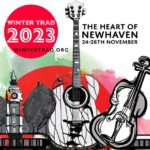 Wintertrad, led by FluteFling supporter Tom Oakes with Shetland fiddler Ross Couper, is 24-26 November in Edinburgh, again at the Heart of Newhaven Community and around Leith Walk. Highly recommended, with great concerts, workshops and sessions. Flutes are a big focus of course.
Wintertrad, led by FluteFling supporter Tom Oakes with Shetland fiddler Ross Couper, is 24-26 November in Edinburgh, again at the Heart of Newhaven Community and around Leith Walk. Highly recommended, with great concerts, workshops and sessions. Flutes are a big focus of course.
Tradwinds
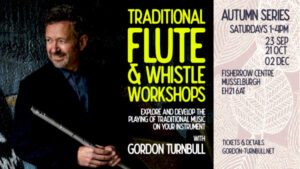 Tradwinds afternoon workshop on Saturday 2nd December 1-4pm. Come along to work on Scottish tunes and techniques for flute and whistles with Gordon Turnbull. Some experience is needed, but it is a mixed and supportive group, teaching material supplied in advance. Fisherrow Community Centre, Musselburgh.
Tradwinds afternoon workshop on Saturday 2nd December 1-4pm. Come along to work on Scottish tunes and techniques for flute and whistles with Gordon Turnbull. Some experience is needed, but it is a mixed and supportive group, teaching material supplied in advance. Fisherrow Community Centre, Musselburgh.

